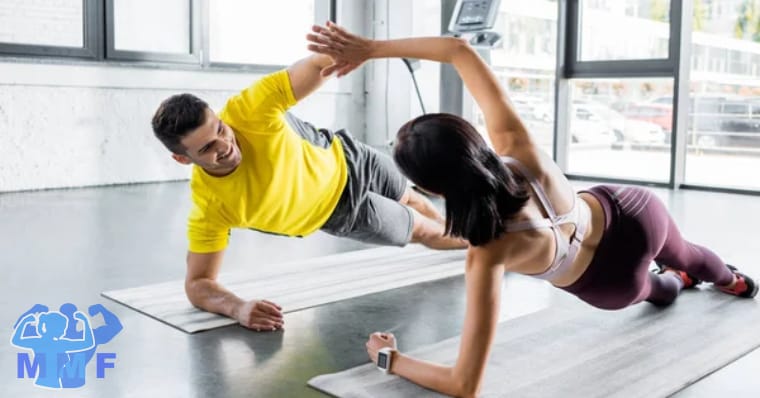Exercise has long been known to be beneficial for your body and mind. Not only can it help you look and feel your best, but it can also help you prevent certain diseases. In this blog post, we’ll dive into how exercise can be the key to looking good, feeling good, and preventing disease. We’ll discuss how it can be beneficial for both your physical and mental health, and the best exercises to incorporate into your daily life. So, if you’re ready to learn more about how exercise can help you improve your health, read on!
1. Benefits of Exercise
Exercise is beneficial for your health in many ways. Not only can exercise help you look better, but it can also help you feel better and prevent diseases. Regular exercise can help improve your overall physical health by improving your cardiovascular fitness, strengthening your muscles, and helping to reduce stress. It can also help improve your mental health by reducing depression and anxiety, increasing self-esteem, and improving sleep quality. Furthermore, exercise can help prevent or manage many chronic illnesses such as heart disease, high blood pressure, type 2 diabetes, and obesity. Exercise can also help reduce the risk of certain types of cancers. The benefits of exercise are clear, so make sure to get regular physical activity to look and feel your best.
2. Exercise and Improved Appearance
Exercising regularly is one of the best ways to improve your physical appearance. Not only can regular exercise help you to look and feel better, but it can also help to prevent certain diseases. By engaging in physical activity regularly, you can boost your self-esteem and increase your confidence. Exercise will help you to tone up your body and make you look more attractive. Additionally, by increasing your muscle mass, you can burn more calories and reduce fat deposits. Regular exercise also helps to reduce stress and improve your overall mood. You’ll find that you have more energy throughout the day, and that you can handle more tasks without feeling overwhelmed. Exercise will also help to improve your posture, as well as strengthen your bones and muscles. All of these benefits combined can help you to look and feel great.
3. Exercise and Improved Mental Health
Exercising is one of the best ways to improve mental health. Regular physical activity can reduce stress, boost self-esteem, and help you relax. Studies have shown that it can also help with depression and anxiety, as well as enhance overall cognitive function. Exercise also increases levels of endorphins, which are hormones that make us feel good. With regular exercise, you can improve your mood and feel more in control of your life. Exercise can also help you sleep better. When you exercise, your body temperature increases and then decreases throughout the day. This helps to keep your body’s internal clock in sync, so you can have a more restful night’s sleep. Additionally, exercise can help you focus on positive activities and take your mind off worries or negative thoughts.
So if you’re looking for ways to stay healthy and feel better, exercise is definitely a key component! Not only will it help you look better and feel good, but it can also help to prevent disease.
4. Exercise and Prevention of Disease
Exercise is an important part of staying healthy and preventing disease. Regular physical activity can help reduce your risk of developing serious health problems, such as heart disease, stroke, type 2 diabetes, and even some cancers. Exercise can also help you maintain a healthy weight, improve your mood, and boost your energy levels. It’s never too late to start exercising—even if you haven’t been active in a while. Exercising regularly will help strengthen your immune system, which helps protect your body from infection and disease. Studies have shown that people who exercise regularly are less likely to get sick or develop certain diseases. Regular physical activity can also help reduce the risk of high blood pressure, stroke, and type 2 diabetes.
Exercise can also help reduce the risk of certain cancers. Studies have shown that regular physical activity can reduce the risk of developing colorectal cancer, breast cancer, endometrial cancer, and prostate cancer. Exercise has also been linked to improved survival rates for people with some types of cancer.
In addition to helping prevent disease, regular exercise can also help improve your overall health and well-being. Exercise can help reduce stress, improve your sleep quality, and boost your mood. It can also help you maintain a healthy weight and build strong bones and muscles. By making regular physical activity part of your daily routine, you can help protect yourself from disease and improve your overall health and well-being. So get moving today—your body will thank you!
5. Types of Exercise for Optimal Benefits
Exercising has many positive benefits that can help you look and feel your best. It can also help you prevent diseases. Regular exercise can help you maintain a healthy weight, as it burns calories. This can help you avoid weight-related health issues such as diabetes, high blood pressure, and heart disease. Exercise also increases your strength and endurance, making everyday activities easier. Exercise helps keep your mind sharp, too. Regular physical activity increases the production of endorphins, which can make you feel happier and reduce stress. Exercise also increases the flow of oxygen to the brain, helping to improve concentration and memory.
In addition to the physical benefits, exercise can also help to improve your emotional health. It can reduce depression and anxiety, while giving you a sense of accomplishment and confidence. Exercise can also be a great way to connect with others, as it gives you an opportunity to socialize with friends or join a gym class.
Finally, exercising regularly can help you prevent diseases such as cancer, stroke, and osteoporosis. Regular physical activity strengthens your immune system and helps protect against illnesses. So, by taking the time to exercise, you’ll be doing your body a world of good!
6. Tips for Incorporating Exercise Into Your Life
Exercising regularly is a great way to look and feel your best, as well as preventing diseases. Here are some tips for incorporating exercise into your life: Start small and build from there. If you’re not used to exercising, start with just 10 minutes of walking or other light activity each day and gradually increase the amount and intensity over time.
Make it fun! Incorporate activities you enjoy so that you’re more likely to stick with it. This could include anything from dancing to biking to swimming.
Include family and friends. Working out with others can be motivating and make it more enjoyable. Make it a priority. Schedule your workouts like any other important appointment and try to stick with it.
Mix it up. Doing different activities will help keep you from getting bored and help you work different muscle groups.
Give yourself credit. Celebrate your successes along the way, no matter how small, to stay motivated and keep going.
7. Resources for Getting Started with Exercise
Exercising regularly is a great way to stay healthy and look good. But getting started can be intimidating. To make it easier, here are some resources to get you started on an exercise routine. First, it’s important to consult your doctor before beginning any exercise program. Your doctor can help you decide the best type of exercise for you and the amount of time you should be exercising each day.
Once you have a plan in place, it’s time to find activities that you enjoy doing. Taking a walk, jogging, biking, swimming, or playing a sport are all good ways to exercise. If you need more guidance, there are many online resources available. Websites such as Exercise.com and Fitocracy offer free workouts and exercise programs tailored to your individual needs.
You may also consider joining a gym or fitness class to help keep you motivated. These classes can be fun and social, and they provide guidance and support from instructors who are knowledgeable about fitness and exercise. Finally, don’t forget the importance of having the right gear. Investing in comfortable shoes and clothes that fit correctly can make a big difference in your experience.
No matter how you decide to exercise, just remember to take it slow and be consistent. Regular exercise will help you look good, feel good, and prevent disease.
8. Conclusion
Exercise is an important part of maintaining good health and preventing disease. It helps us look and feel our best, boosts our energy levels, and can even reduce our risk of certain diseases. Exercise can be as simple as taking a walk or playing a sport, but it’s important to find something that you enjoy and make it part of your regular routine. Regular exercise can help you stay fit, healthy, and feeling good. So start exercising today and make it a habit to reap the benefits for years to come!
References: Exercise, Health, and Well-Being: A Review | Physical exercise and psychological well-being | The Role of Exercise in the Prevention of Disease | The Role of Exercise in Prevention and Treatment of Noncommunicable Diseases


